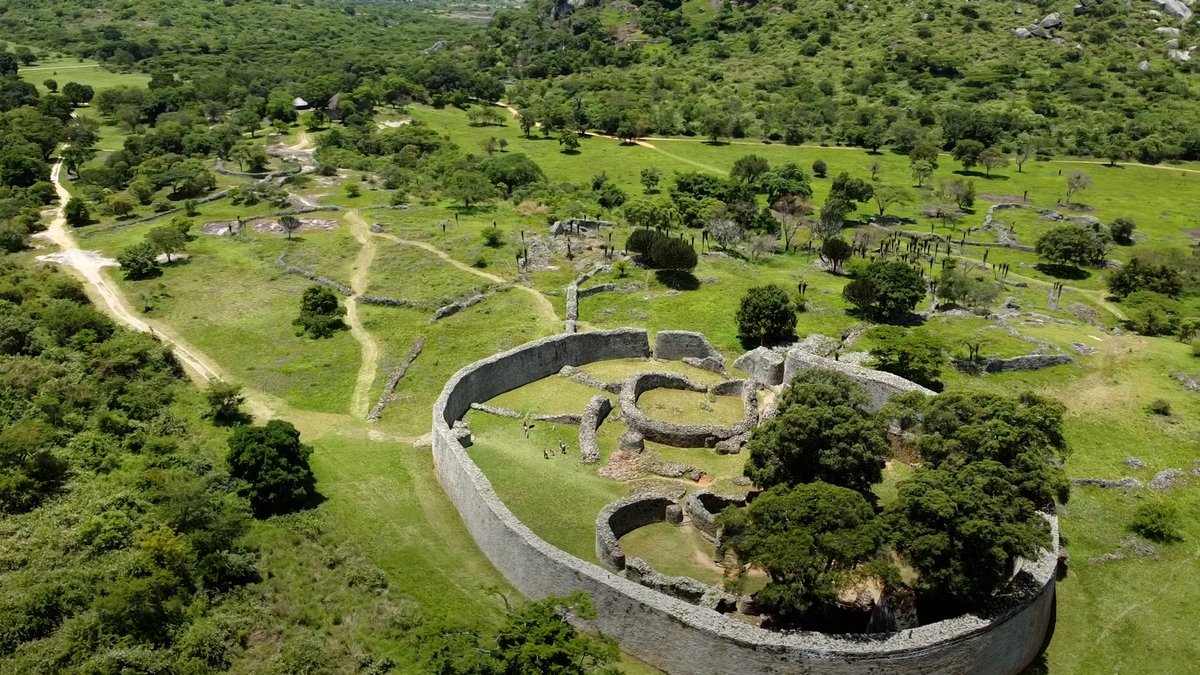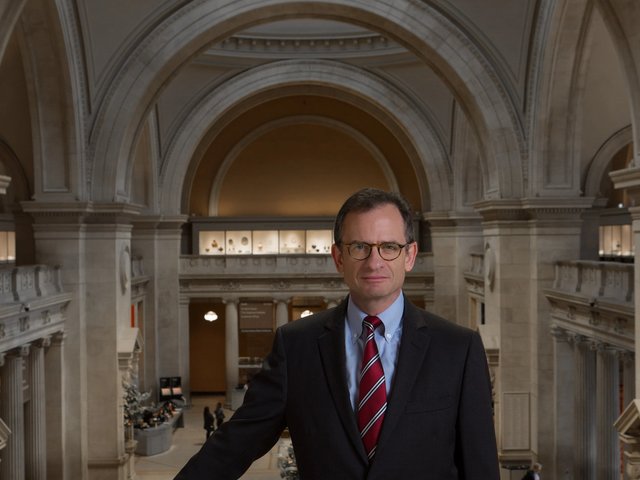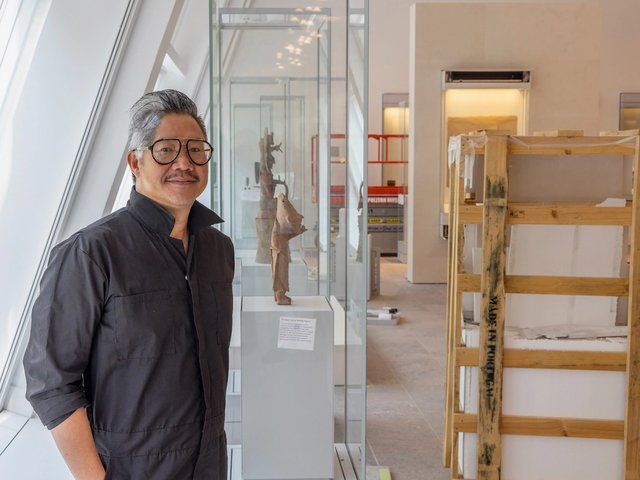The New York art world is abuzz with excitement about the reopening of the Michael C. Rockefeller Wing at the Metropolitan Museum of Art. While the architecture of the revamped space and the newly displayed objects from Africa, Oceania and the ancient Americas have been front of mind, the wing also features a number of works by contemporary artists. Among these—and perhaps most under-the-radar—is a special project by the Ethiopian American film-maker Sosena Solomon.
Solomon spent two years travelling to sites across sub-Saharan Africa and creating a dozen short documentaries about their cultural significance, often through the eyes of locals who live and work there. Three of her videos now appear on screens in the Rockefeller Wing. Others can be accessed via a scannable QR code as part of certain wall texts, and they are all available to view online on the Met’s website.
These are not the usual films one might expect at a museum. They lack archival footage, providing a contemporary look at cultures whose histories are represented in the galleries. They feature royal burial grounds in Uganda, ancient rock paintings in Botswana and show bronze casters in Benin City, among other topics and locations—many of them not open to tourism.
“The videos add a new layer of context that goes beyond state-of-the-art labels,” Alisa LaGamma, the curator in charge of the Rockefeller Wing and a specialist in African art, tells The Art Newspaper. LaGamma had a vision for these specially commissioned videos before bringing Solomon in for the project. “I wanted to create a bridge between the different places represented in the collection and give our visitors access to people on the ground with expertise in cultural-heritage preservation,” LaGamma says. “I thought presenting the architecture of these places provided a more expansive view.”

Ambohimanga, Madagascar, 2023 Image by Sosena Solomon, courtesy the Metropolitan Museum of Art
LaGamma came up with the idea for the project after witnessing the power of a contemporary video featuring a historic mosque as part of her 2020 Met exhibition Sahel: Art and Empires on the Shores of the Sahara. “The footage was so engaging,” she says. “It defied people’s sense of what these cultural landscapes look like in reality.”
To help choose locations to film the Rockefeller Wing’s new videos, LaGamma contacted the World Monuments Fund (WMF). She says she wanted to concentrate on sub-Saharan Africa specifically, because “as someone from that part of the world, I feel that people don’t have frames of reference and think in homogeneous terms. I wanted to challenge people’s understanding of what an African monument looks like.”
After hiring Solomon, the Met gave her a team to work with, about a year to travel around to the sites and another year to edit all her footage. An integral part of this team was WMF’s Stephen Battle, the senior regional director of the organisation’s Africa projects, who served as producer on the videos. (LaGamma and the Met’s director, Max Hollein, also tagged along on a few visits.)
“Stephen and I travelled together to all 12 sites. We climbed mountains together,” Solomon says. “It was a real collaboration with him.”
Although the sites had already been largely chosen by the time Solomon joined the project, she says she did have some sway in pushing for the two sites in Ethiopia—the rock-hewn churches of Lalibela and Tigray—which became her most memorable trips. The churches date back hundreds of years (the oldest in Tigray are from the 5th century AD) and are still sites of pilgrimage for Ethiopian Orthodox Christians. The Lalibela churches are literally carved into the ground from a single rock. And in order to get to the Tigray churches, built into the sides of cliffs, visitors must scale the rock face—barefoot, since it is holy ground.

Kilwa Kisiwani, Tanzania, 2023 Image by Sosena Solomon, courtesy the Metropolitan Museum of Art
“That was the highlight for me,” Solomon says. “The physical experience of getting to the church, reliving the pilgrimage aspect of it, having to film after two hours of climbing.” She remembers an elderly woman with a cane expertly making the ascent when she was there. “The churches are primarily for the community,” Solomon says. “The climb is part of the spiritual experience.”
Battle, who scaled the Tigray cliffs alongside Solomon, says that although he had already been to most of the places they visited together, she helped him see them in a new light. “To be clear, the pixie dust, all the magic is Sosena’s,” he says of the videos. “She has an amazing ability to disappear behind the camera, put people at ease and stitch together significant moments.”
Battle adds that his favourite part of the trips was meeting local people and having in-depth conversations with them about culture and heritage. He recalls that in Ghana, while filming inside traditional Asante buildings, they encountered the resident priestess. “She converses with spirits and goes into a trance,” he says. “We were lucky enough to witness and film that.”
The sense of wonder experienced by both Battle and Solomon while making the videos comes across in watching them, providing much-needed context for people who have never travelled to sub-Saharan Africa.
“The films are making up for critical information that is missing in the collection, to ground you in the space,” LaGamma says. She sees the project as a pilot for what the museum could do later for other sections of the Rockefeller Wing, or even elsewhere at the Met. “Once we have a sense of what works, this could be an add-on over time in different parts of the museum,” she says. “There have been special exhibitions with videos filmed on location but not in the permanent galleries. It’s the next best thing to going to the place.”






